5 Magical Open-Air Cinemas to Visit on the...
From Samos to Crete, we've selected...
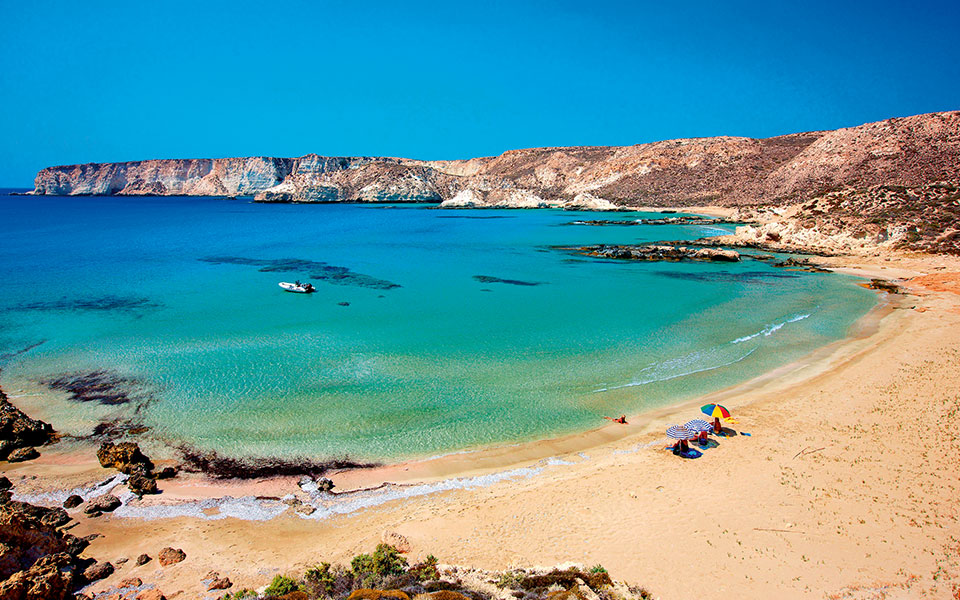
Koufonisi island, off the coast of Crete
© Shutterstock
LEGENDARY ELOUNDA: At the beginning of the 20th century, Elounda was a simple village where locals fished and worked in the salt pans and the whetstone quarries. In 1948, the New Elounda Hotel (aka the Megaron) was established. In 1963, Disney’s The Moon-Spinners was filmed in the area. That same year, in what was a happy coincidence for the development of Elounda, the opening of Minos Beach – the first luxury hotel in Crete – in Aghios Nikolaos placed Lasithi firmly on the tourism map.
In the early 1970s, it was Elounda’s turn to welcome its first luxury hotel, the legendary Elounda Beach. Other resorts followed, and within a decade, Elounda was transformed from a fishing village into a cosmopolitan destination – hosting all sorts of VIPs, from Saudi princes to Hollywood movie stars. Its development may have cost the village its tranquil air and a great part of its beauty, yet there is still a charm to the place, clearly visible in the picturesque Upper (Ano) Elounda quarter with its stone-paved streets, where you’ll see local women sitting outside their homes, greeting passers-by.
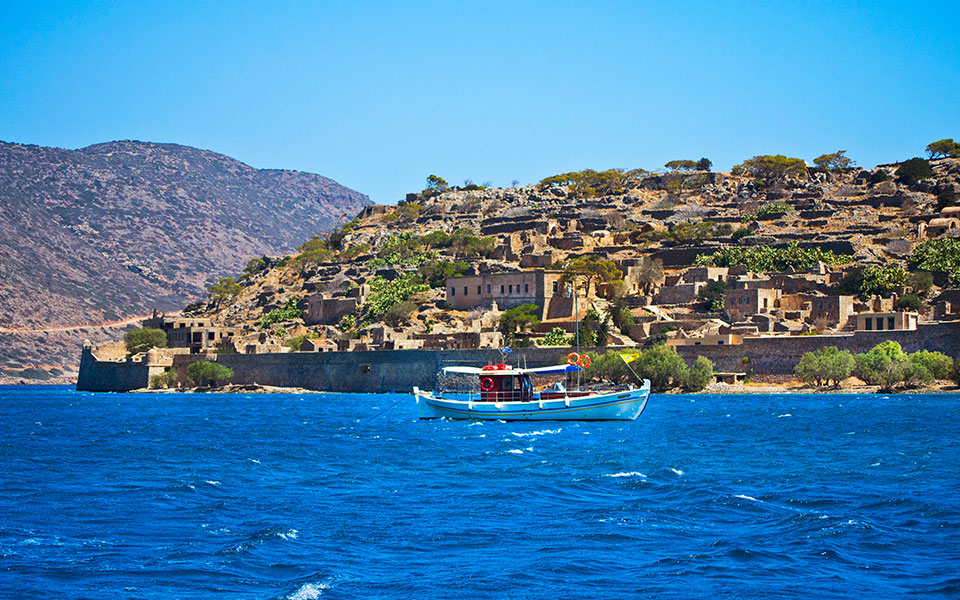
Spinalonga
SPINALONGA: One of Crete’s most deeply moving historical monuments, Spinalonga Island is increasingly becoming a focal point of cultural interest and creativity. In antiquity, Spinalonga helped protect Olous (now Elounda) in northwestern Mirabello Bay, from the open sea. (Olous, a sunken Dorian town at the bay’s southern end, prospered in the 4th/3rd centuries BC as a strategic maritime center.) Spinalonga’s massive existing castle, skillfully adapted to the landscape, was constructed by the Venetians (16th century). Later a haven for Christian refugees and Chainides (“fugitive rebels”), the island succumbed to Ottoman rule in 1715, afterwards becoming a thriving port, then an isolated leper colony (1903-1957).
Today, Spinalonga is a popular archaeological site with pending UNESCO World Heritage status that has drawn the interest of historians, authors, artists and politicians. Most recently, composer Nikos Xydakis and poet Dionysis Kapsalis collaborated to produce a powerful tribute to Spinalonga (“Apokopos or Spinalonga”), inspired by the 16th-century Veneto-Cretan literary tradition and by the island’s timeless story of struggle, pain, love and death. – JOHN LEONARD
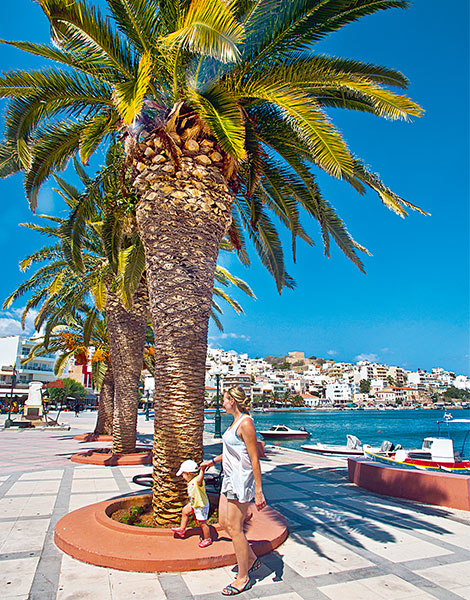
Sitia
© Clairy Moustafellou
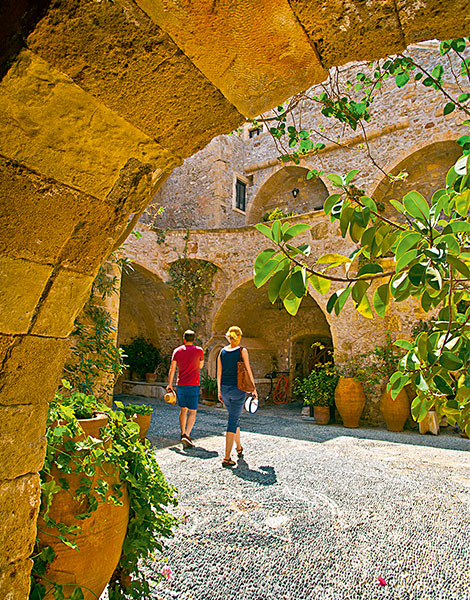
Toplou Monastery
© Clairy Moustafellou
CRETE’S EASTERNMOST TOWN: The small coastal town of Sitia, 70km from Aghios Nikolaos, has developed a remarkable level of self-sufficiency. It has both an airport and a seaport, while Aghios Nikolaos, the capital of the Regional Unit of Lasithi, has neither. In terms of architecture, it does not differ greatly from the rest of Crete’s contemporary urban centers: apartment blocks abound.
Nevertheless, despite the somewhat unappealing first impression it may create, Sitia is pleasant and lively, with hospitable inhabitants who like to interact with one another and their foreign visitors. Just drop in at any of the raki-serving establishments on Eleftheriou Venizelou Street – such as the Oinodeion or Rakodikeion – and you’ll see for yourself. The city’s most beautiful monument is the Kazarma, a Venetian fortress so well-preserved you’d think it was built yesterday. The Archaeological Museum is also noteworthy, as it features the Palaikastro Kouros, a chryselephantine statue dating to the Late Bronze Age (both open Tue-Sun, 08:00-15:00).
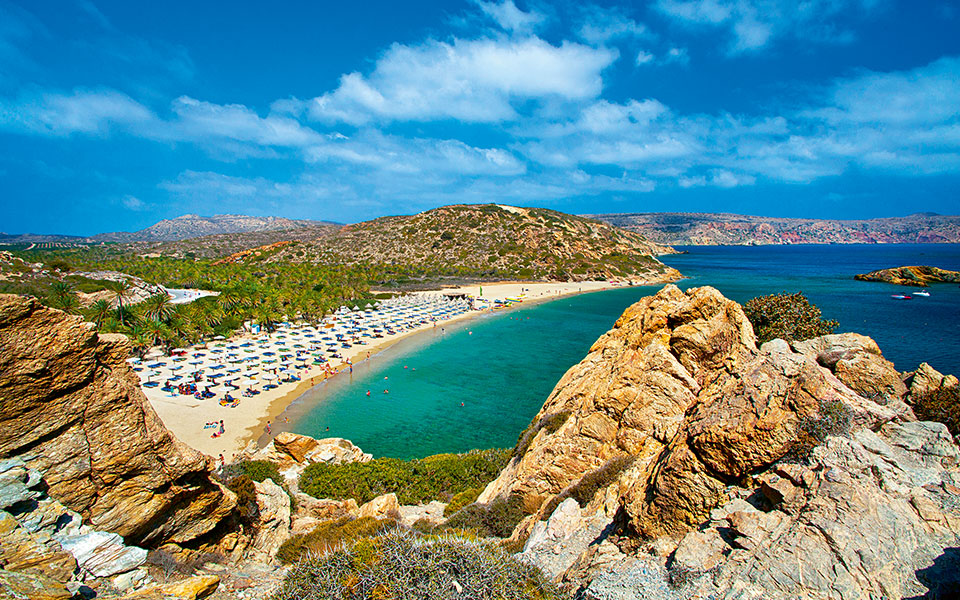
Vai Beach
© Clairy Moustafellou
CRETE’S OWN PALM BEACH: Up until the 1980s, Vai served as a haven for the counter-culture; since then, the area has changed considerably. Today, Vai stands as one of the most touristy spots in eastern Crete. It is the location of one of the largest natural palm forests in Europe (and consequently has been designated a protected area); the trees are of the species Phoenix theophrasti, commonly known as the Cretan date palms. This is a rare species endemic to the Aegean, which flourishes in wet, sandy soil, reaches a height of 15m and can possess more than one trunk.
A large sandy beach spreads out in front of the palm forest. Here, you’ll find the Vai Restaurant, which has been certified by the Agronutritional Cooperation of the Region of Crete and awarded their Cretan Cuisine quality label; the restaurant serves fish and other seafood, local raki and organic wines from Toplou Monastery. Just 7km to the south of Vai lies Kouremenos, a 1.5km-long beach with fine sand and tamarisk trees. On account of its prevailing winds, Kouremenos is a magnet for fans of windsurfing, kite-surfing and SUP (you can find out more about lessons and equipment rentals from Gone Surfing Crete).
A REMOTE GEM: Kato Zakros is way off the beaten track, but well worth the journey that takes you through the inspiring, eternal landscape of easternmost Crete. At this archaeological site, you’ll get a better understanding of the scope of Minoan influence as you explore a small but intricate palace/town complex (ca. 1900-1450 BC) and pick up on key trans-Cretan characteristics that connect this settlement with the Minoans’ larger socioeconomic network. The site’s own treasures include its architecture and rich artworks – among the latter are a bull’s head with golden horns; a gold-covered libation vessel (rhyton) depicting a mountaintop sanctuary; and luxurious vases of rock crystal and colorful veined marble, some with bold, upward-sweeping handles, all now in the Irakleio Archaeological Museum. The harbor and the presence of imported artifacts indicate that Zakros was a gateway to the eastern Mediterranean. Inland lies the “Valley of the Dead” – Crete’s answer to the Grand Canyon (Open daily 08:00-20:00). – JOHN LEONARD
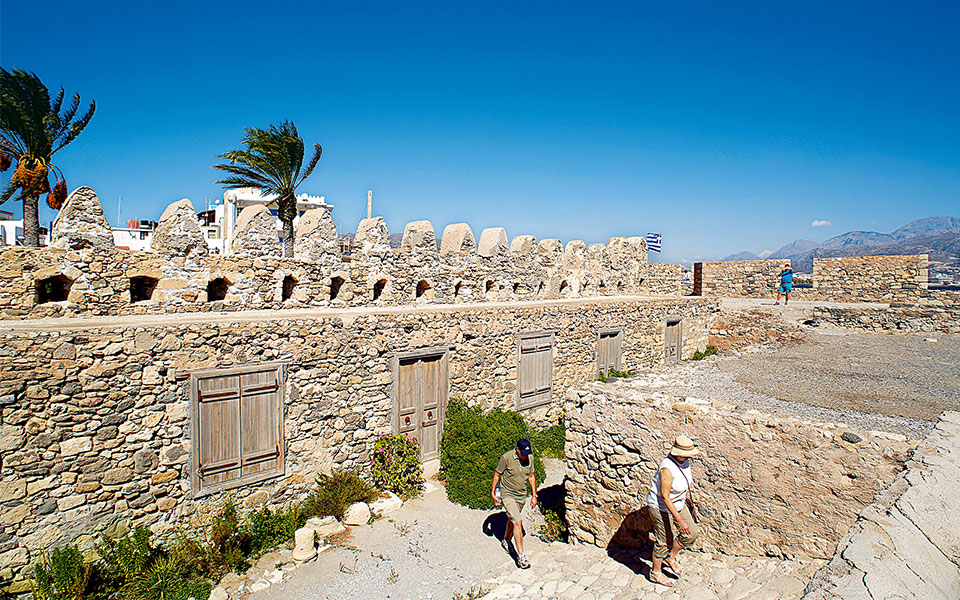
Kales Fortress - Ierapetra
© Nikos Kokkas
IERAPETRA: The atmosphere in Greece’s southernmost town is different from the feeling you get in the island’s other urban centers, and the weather is, too. Here, the temperatures are higher so, when autumn swings around and you’re not sure about swimming in places like Aghios Nikolaos, you’ll still able to go for a dip in Ierapetra. The town is famous for its abundance of tomato-producing greenhouses – a cornerstone of the local economy, but its best-known attraction is the Kales Fortress (open Tue-Sun 08:00-15:00), situated in the old port. This 13th-century Venetian stronghold – subsequently leveled by an earthquake and also damaged by raids – was restored by the Ottomans in the 17th century. A stroll through the lanes of the town will reveal the Old Town’s mosque and, next to it, the Turkish Fountain.
Follow the locals heading for Stratigou Samouil Street or for pedestrianized Michail Kothri Street in the waterfront area and enjoy a tsikoudia with some meze, or even a bout of bar-hopping till the wee hours. Two of your most interesting options for drinks are Koubares and Dipla. GREAT SWIMS: Though Ierapetra has beaches right by the town, it’s worth exploring other swimming spots (which are even prettier) a little further out, in the southern section of the Regional Unit of Lasithi. Head east to Megali Paralia, a tranquil, seemingly endless sandy beach with tamarisk trees near the village of Koutsounari. Aghia Fotia Beach, with its fine pebbles and sun loungers, is nice, too. If you can spare the time, head as far as Xerokambos, 70km from Ierapetra, on the eastern coast. The road is long and full of curves, but it’s worth it. The wild landscape is alive with the scent of thyme, and there are beaches for every taste – some with small pebbles, some with sand and even one with clay, like a natural spa.
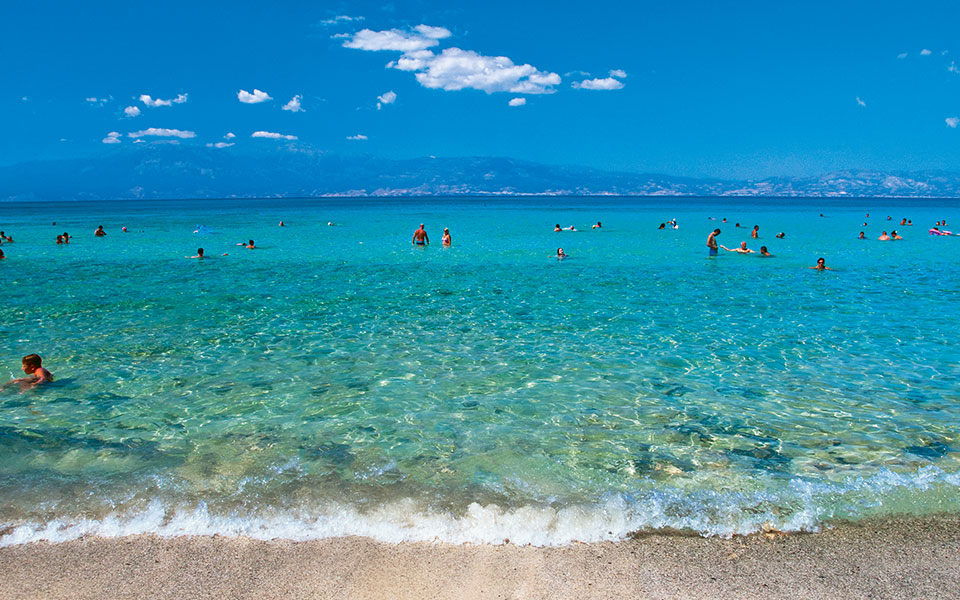
Chrysi Island
© Clairy Moystafellou
DAY-TRIPPING: For even more exotic swimming destinations, take the little boat that crosses over to Chrysi and Koufonisi, two enchanting islands in the Libyan Sea opposite Ierapetra and Makry Gialos, respectively. The more popular is Chrysi (or Gaidouronisi), with its sand dunes, cedars and fantastic waters. Formerly an informal camping destination, it now has beach umbrellas, sun loungers and food stands. The island’s best-known beach is Belegrina, to the north; there are, however, many other beaches to be explored, including Kataprosopo and Vagges to the east.
Koufonisi (or Lefki) is a lower-key destination that does not attract large numbers of visitors. This island features sandy beaches, white rocks and low vegetation; an ancient theater dating to the 2nd century AD and the remnants of a settlement have been discovered here. Both islands are included in the Natura 2000 network of protected areas. (www.cretandailycruises.com)
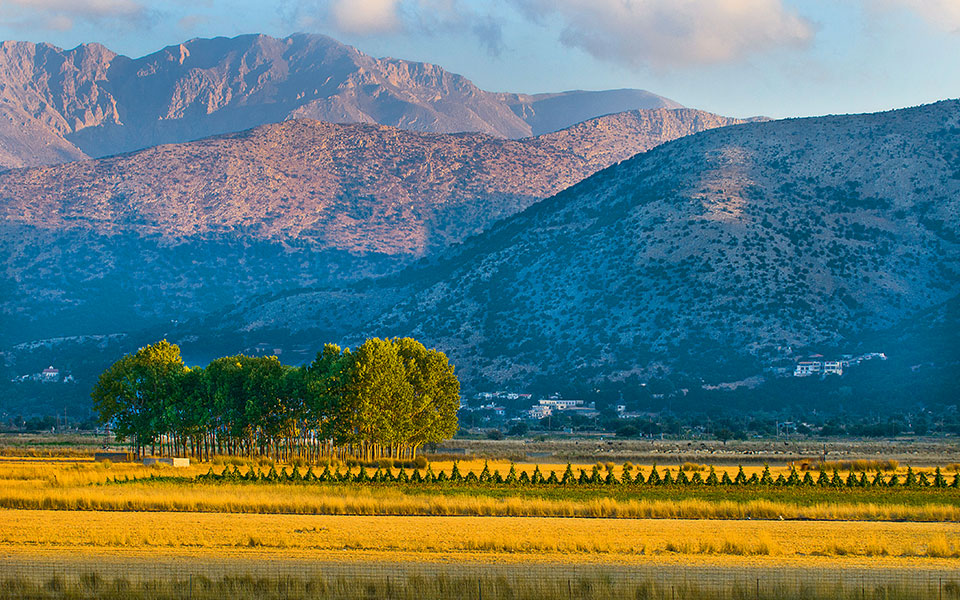
The Lasithi Plateau is not a tourist destination per se, but there is plenty to explore, including many little villages and the Dikteon Cave where, according to Greek myth, the goat Amalthea nurtured the infant Zeus.
© Clairy Moustafellou
A PLACE OF WORSHIP: Finish your trip through Lasithi with a visit to the Byzantine church of Panaghia Kera (Open Tue-Sun, 08:00-15:00). This place of worship, erected in the 13th or 14th century, stands just a stone’s throw from the village of Kritsa and a relatively short distance – 8.5km – away from Aghios Nikolaos. The first thing you’ll notice is its rather austere façade, formed of three triangles; however, it is the murals in its interior that are of greatest importance. They were created during different periods and depict the Feast of Herod, the Massacre of the Innocents, the Last Supper, the Weighing of Souls and other religious scenes. After your visit here, take a walk through Kritsa or nearby Kroustas, two of the best-known villages in the area.
TIME TRAVEL: The ruins of the city of Lato capture all the romance of the ancient history of Crete. In a saddle between two hills, once-mighty Lato looks down on Mirabello Bay and the town of Aghios Nikolaos, formerly Lato’s port. Founded in the 7th century BC, this was the birthplace of Nearchos, Alexander the Great’s admiral. The sea and maritime trade must have been vital to Lato, as it possessed little arable hinterland. On entering the fortified gate, with its three successive entrances, and scaling the steep, stepped street to the Agora, one begins an unforgettable experience. Most ruins here belong to the late Classical and Hellenistic eras. The main street, lined on one side with slope-hugging houses and on the other with shops or workshops, terminates at a small square in, around and near which one finds a deep cistern, a council house (Prytaneion) with a stepped entrance/assembly area, a stoa (colonnaded shelter), an exedra (statue niche), a temple and a theater (Open Tue-Sun 08:00-15:00). – JOHN LEONARD
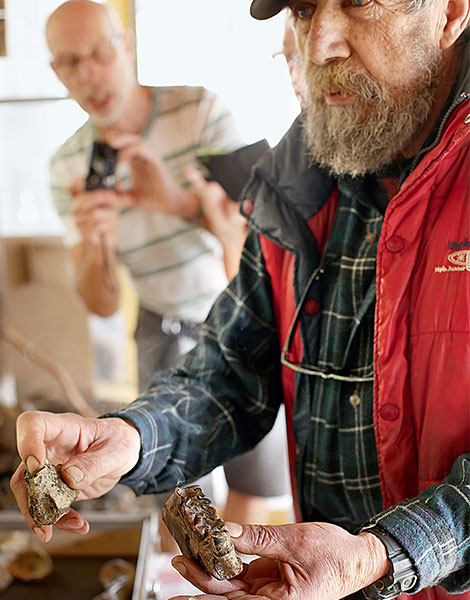
Fossilis Found in Katharo
© Nikos Kokkas
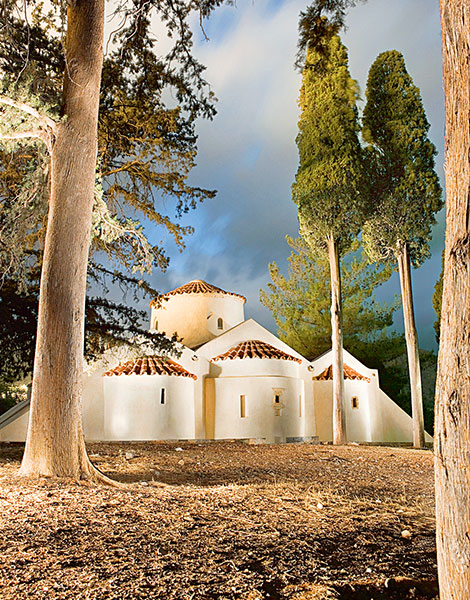
Panagia Kera Krista
© Tobias Gerber/Laif
PLATEAU GEMS: A trip to the Lasithi Oropedio (“plateau”) reveals a different side of Crete. It encompasses a series of villages (Tzermiado, Avrakontes, Aghios Georgios, Psyhro, Lagou and others), built in a circle around a large, fertile plain full of dilapidated windmills once used to irrigate the fields. In the main, the Oropedio’s residents make their living through livestock farming and agricultural production; it’s quite possible, as you walk around one of the villages, that you’ll come across a family or two seated on plastic chairs by the roadside trimming string beans for the local market. Most of these villages offer the same sights: two-story dwellings with wooden doors and faded window frames, shops selling traditional handwoven textiles, and traditional cafes where the older men chat away, sipping tsikoudia.
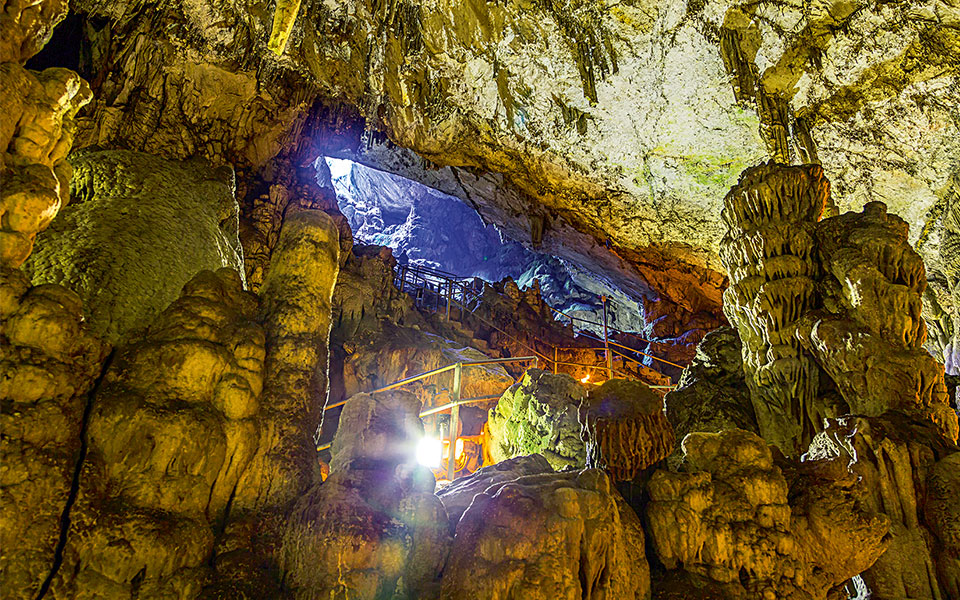
Dikteon Antro
© Perikles Merakos
A CAVE OF MYTH: The most popular sight to see in the Oropedio is the Dikteon Antro (or Dikteon Cave). According to one version of the myth, this is the place where Rhea sought refuge in order to give birth to Zeus, whom the she-goat Amalthea raised, with the help of the Kouretes (mythical male protectors). It is absolutely worth a visit (open daily, 08:00-20:00), as is the complex made up of four small museums (with exhibits related to Cretan traditional homes, 20th-century neoclassical homes and other subjects), located in the village of Aghios Georgios (Open daily, 10:00-16:00).
COOL IN MANY WAYS: Before departing from Lasithi, be sure to pass by another plateau – that of Katharo, which is most easily reached from the village of Kritsa. This area is composed of pastureland with huge Kermes oak trees and a few small tavernas. Way off the tourist itinerary and cool even in summer, it’s an ideal place for hiking or cycling. Fossils of dwarf hippopotamuses dating back 550,000 years have been found in the area – a discovery that renders Katharo an important source of information about Paleolithic Crete.
From Samos to Crete, we've selected...
Discover festivals, beaches, food, and hidden...
The island of Crete is attracting...
UNESCO has added six Minoan palaces...